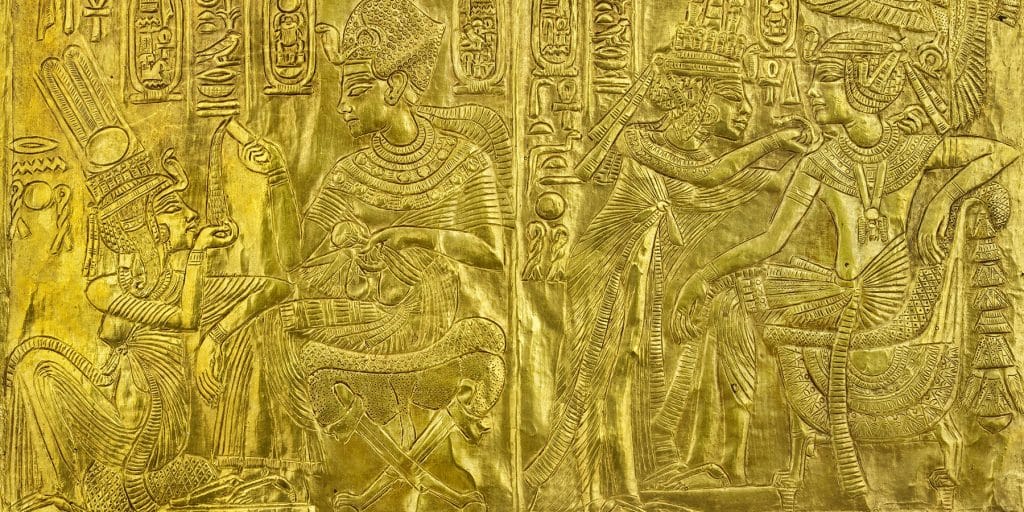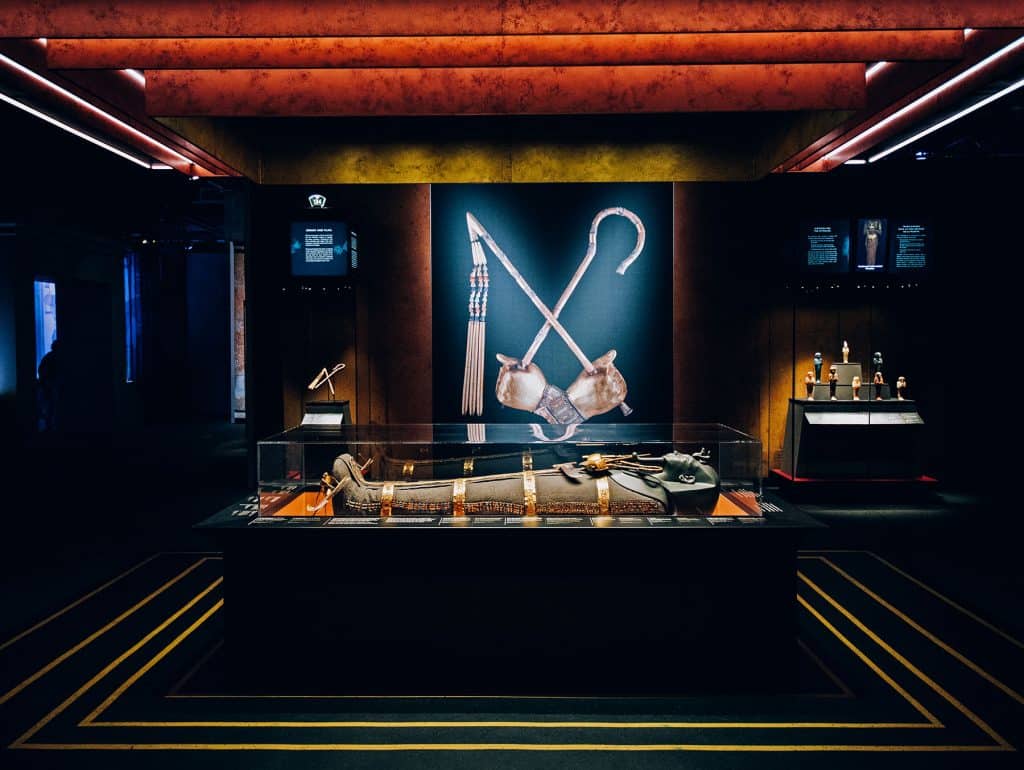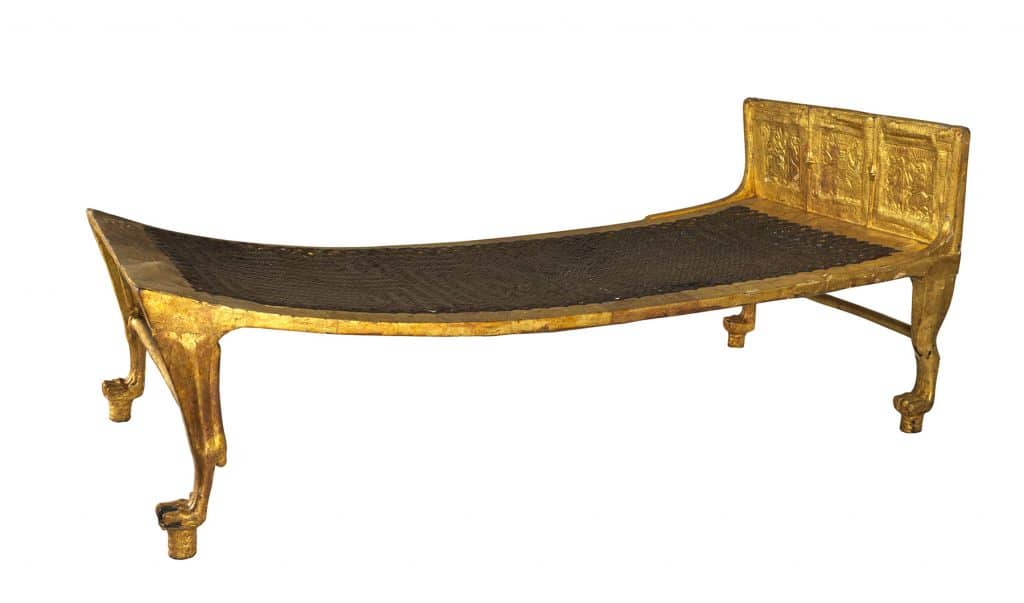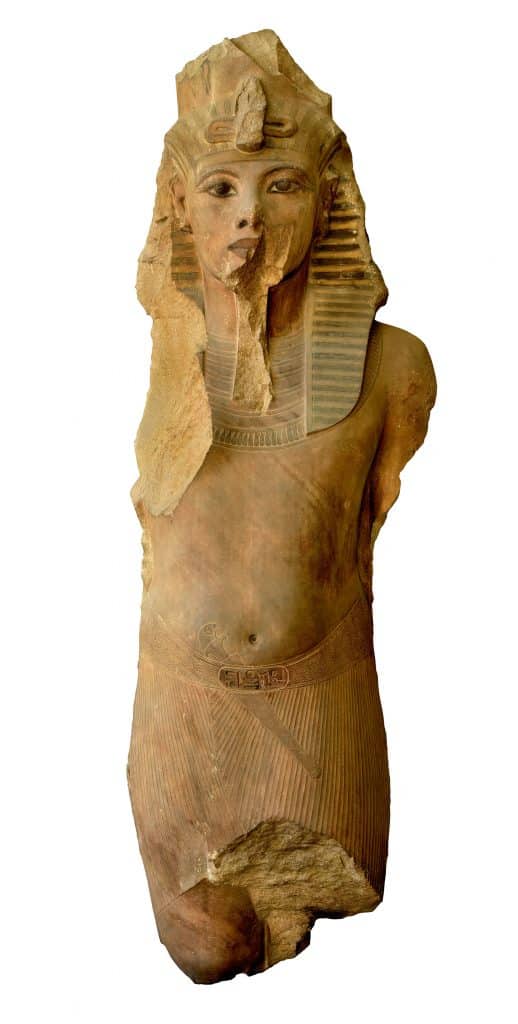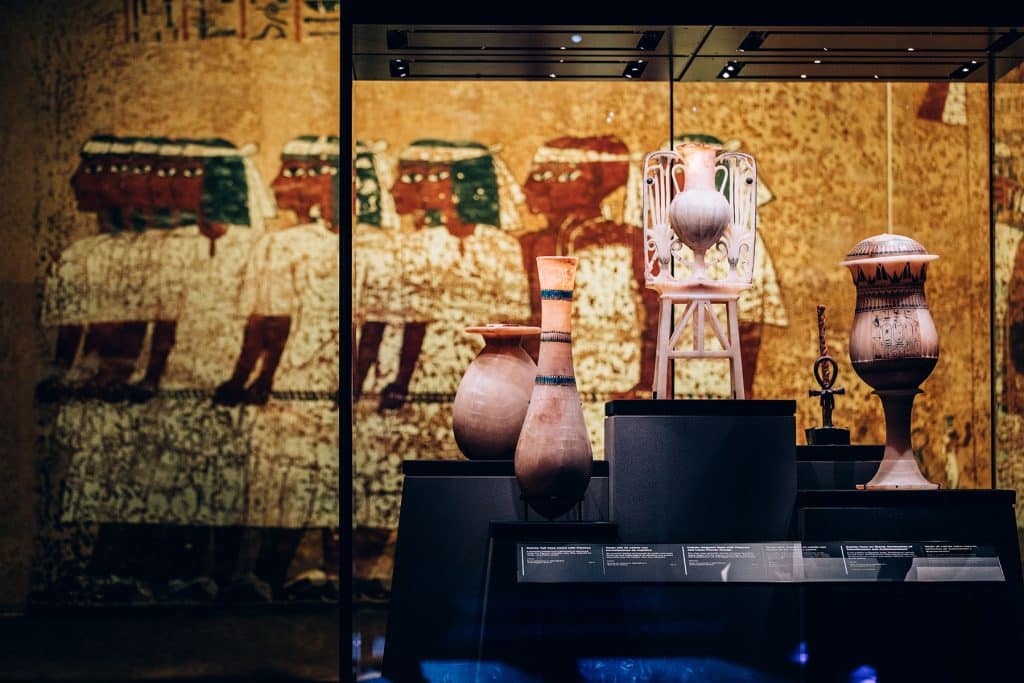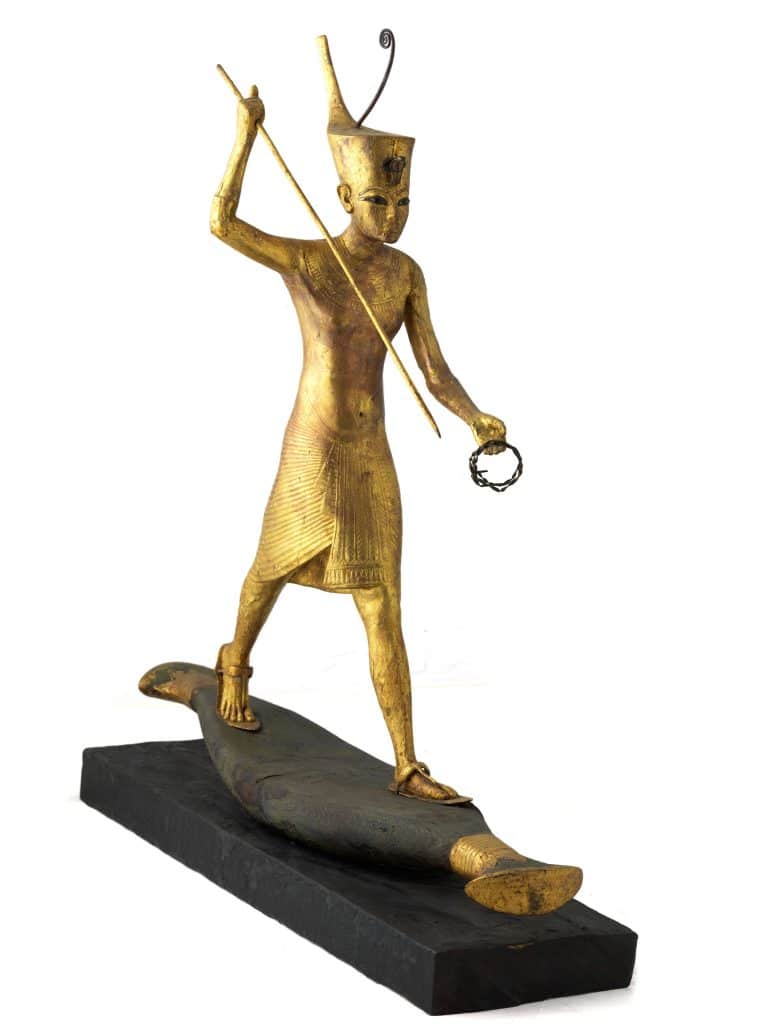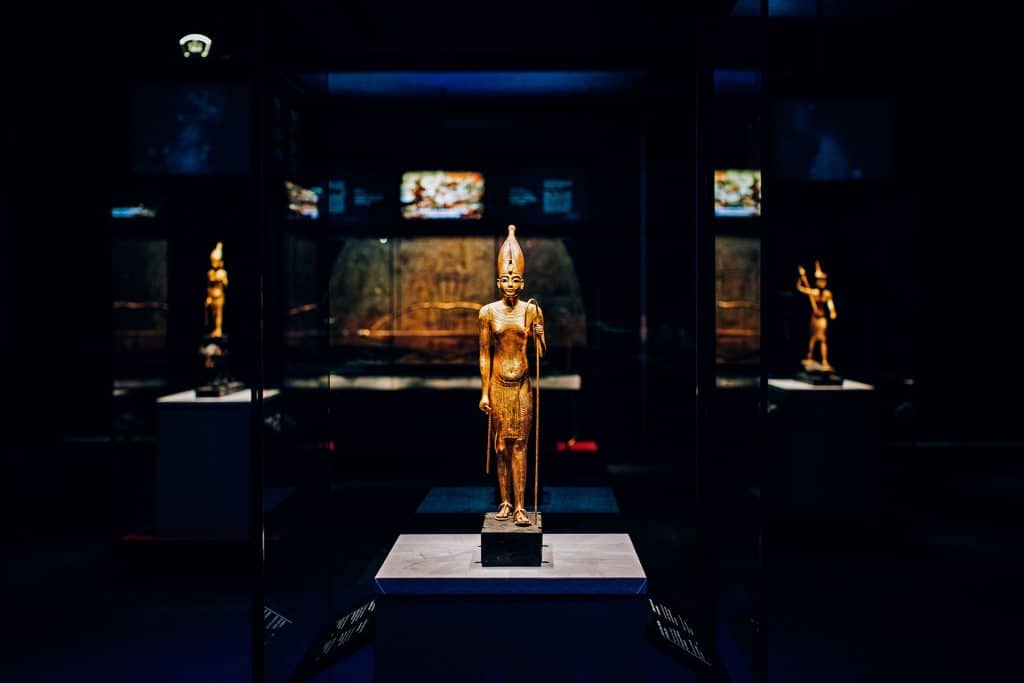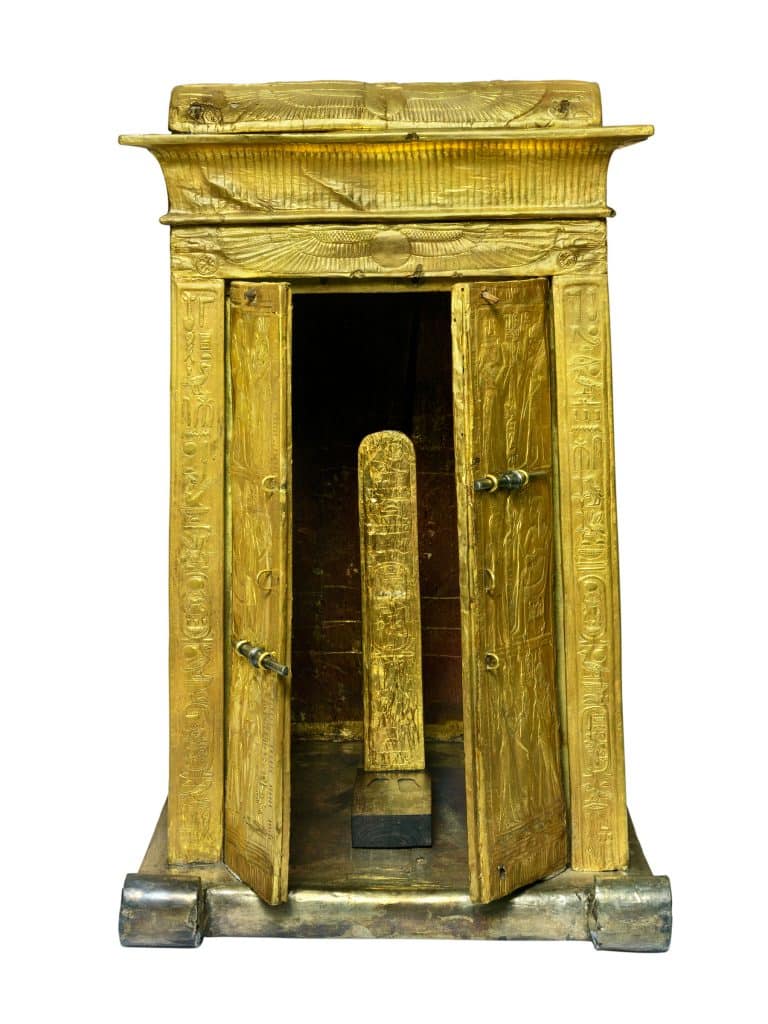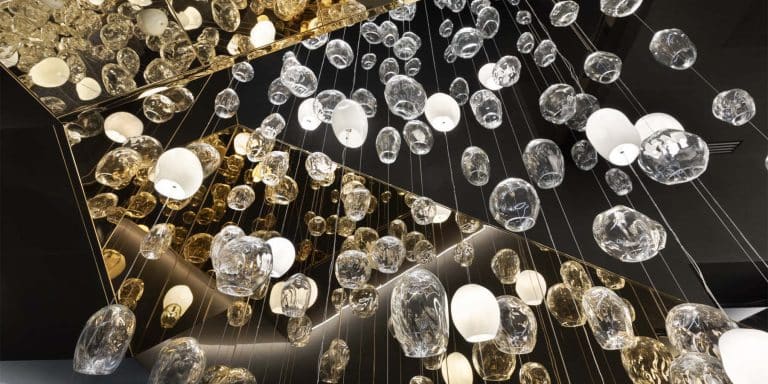
October 14, 2018“Treasures of the Golden Pharaoh,” at the California Science Center, features 150 artifacts from the tomb of the pharaoh Tutankhamun, which was discovered in 1922 (photo by IMG). Top: Detail of a gilded wooden shrine that depicts scenes from the daily life of of King Tut and his wife, Ankhesenamun. (photo by ©Laboratoriorosso, Viterbo/Italy).
Ancient Egyptian civilization has piqued our collective curiosity for millennia. Greek historian Herodotus wondered at Egypt’s wealth and death obsession. Medieval Christians made pilgrimages to the country. Muslim thinkers studied its ancient texts. And Jean-François Champollion spent years deciphering the Egyptian hieroglyphs on the Rosetta Stone.
But nothing could match the mania that followed the almost-accidental find in 1922 of Tutankhamun’s tomb in the Valley of the Kings. In the nearly 100 ensuing years, our fascination with Egypt has exploded, moving from academia to nearly every aspect of modern art, design and culture.
In their Victorian- and Art Deco-era Egyptian Revival designs for jewelry and furniture, tastemakers like Carlo Giuliano, Alessandro Castellani, Eugène Fontenay and Cartier borrowed scarabs, sphinxes, embossed gold and gems from their ancient predecessors. Couture pieces with Egyptian motifs by the likes of Jean Paul Gaultier and Paolo Gucci are collector must-haves today. Such thoroughly contemporary furniture makers as Pascale Girardin, Material Lust and the Memphis Group have playfully riffed on geometric Egyptian forms.
To celebrate the centennial of Tut’s unearthing, the California Science Center, in Los Angeles, is presenting “Treasures of the Golden Pharaoh” through January 2019. The monumental exhibition contains more than 150 artifacts and gold pieces, the largest gathering of objects from Tut’s tomb ever on public display outside Egypt. (By comparison, New York’s Metropolitan Museum of Art showcased 53 Tut treasures in its late-1970s exhibition, which recreated the excitement surrounding the tomb’s discovery and welcomed more than 8 million visitors, ushering in the modern age of the museum blockbuster.) The items are likely never to travel again once they return to their permanent home in the new Grand Egyptian Museum, currently under construction in Cairo.
“Treasures of the Golden Pharaoh” reminds us why the dazzling world of ancient Egypt continues to inspire. The display features exquisite rings found on Tut’s fingers, gem-encrusted body jewelry and gold sandals, as well as items the young king used in life, like elaborate carvings, sculptures and ritual objects.
Here, the California Science Center’s senior vice-president of exhibits, Dr. Diane Perlov, talks to Introspective about show highlights, such as Tut’s gilded ceremonial bed, perched high on beautifully gilded lion legs, and the ornate canopic vessels that held his mummified organs (the heart was to be weighed against the feather of maat, or “truth,” in the afterworld).

Gilded statues of King Tut are featured in the exhibit. Photo by IMG
Tut first visited California in the 1970s, attracting more than one million visitors to Los Angeles County Museum of Art — a record at the time. In 2005, nine hundred thousand people stood in line at the museum to see his tomb. Why again and why now?
This is the first leg of a ten-city, seven-year international tour. We are first in marking the centennial of British archaeologist Howard Carter’s discovery of the best-preserved tomb ever. The window his find opened onto ancient Egypt was groundbreaking, on historical, design and technological levels.
Is this the same old Tut-mania?
Not at all. First, previous Tut shows always added non-tomb Egyptian artifacts for context, because access to many of the tomb items was limited. The most Tut items ever shown was around fifty. Here, we have three times that, and all but one come directly from the five thousand key items recovered by Carter.
This is not the usual art history focus.
Everything about Egypt is historical, but, yes, we tried to take a more technological approach. Nine interactive galleries take viewers through the nine steps of the afterlife, a journey for which all these precious objects were intended. Seen this way, and not simply as separate museum collectibles, the objects reveal New Kingdom life and beliefs.
There are ample references to archeological and forensic techniques, which tell us a great deal about the boy king, whose father was the famous monotheist Akhenaton.
We wanted to include dazzling artifacts but also focus on how science and DNA analysis have been able to suggest an actual person who became pharaoh at nine and died around nineteen. For all the splendor, Tut had a clubfoot, likely walked with a cane and suffered a serious bone break that may have killed him.

A piece of jewelry with a bird-like design. Photo by IMG
In ancient times, tombs were vandalized as quickly as they were sealed. Why did this one come down to us so untouched?
It is hard to imagine, but Tut was a minor pharaoh — what would have been buried with someone like Ramses staggers conception. Grave robbers and archeologists missed Tut’s tomb, and Carter was about to give up when he stumbled on it. The weather also conspired to preserve everything.
Each day at work, you get to walk through all this. Are there pieces that you find particularly compelling?
Yes. Both dramatic and simple things. There is a wonderful gilded six-foot figure intended to protect Tut. Then, there are the amazing functional craft and technological innovations — screws, bolts, complex latching systems that strike us as fully modern yet are thirty-five hundred years old and all made by hand. There’s also an actual linen glove, probably worn for chariot riding, which makes this remote, astounding history seem very human.
